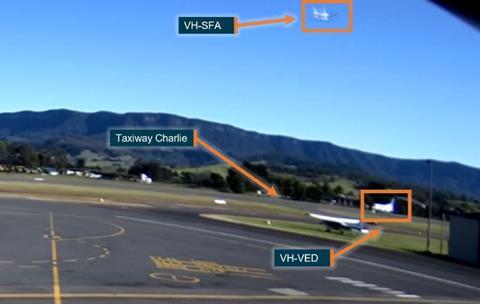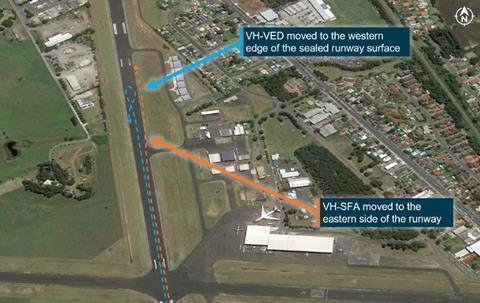A misunderstanding about weight restrictions on a taxiway and poor radio communications resulted in a Piper PA-28 Cherokee taking off over a taxiing Saab 340.
The serious incident occurred on 6 July after the Link Airways Saab 340 (VH-VED) had landed on runway 34 at Shellharbour airport after a service from Brisbane, according to a final report by the Australian Transport Safety Bureau (ATSB).

After landing at the non-towered airport, the Saab 340, carrying two crew and 13 passengers, was required to backtrack owing to a taxiway weight restriction.
“As the Saab crew lined up with the centreline to commence their backtrack, they observed the PA-28 rolling on the runway towards them,” says ATSB.
Unable to contact the PA-28, the Saab crew moved to the runway’s western edge. Spotting the Saab, the PA-28 pilot elected to continue the take off, passing over the wing of the Saab at a height of 150ft.
The ATSB’s query learned that the PA-28 pilot – unaware of the taxiway weight restriction – assumed the Saab would vacate the runway after landing. In addition, the PA-28 pilot did not clearly state over the radio that he was entering the runway, and also did not hear the Saab’s crew stating that they were going to backtrack.
Following the incident, the flying school that operates the PA-28 updated its admission procedures and made other changes, while Link reviewed its policies and guidance for operations into Shellharbour.

Link also encouraged its crew members to refamiliarise themselves with radio procedures in non-controlled airspace.
“When operating at a non-towered airport, pilots are responsible for maintaining separation between one another,” states the ATSB.
“This practice of ‘self-separation’ relies on pilots making clear radio broadcasts when necessary to prevent traffic conflicts and paying attention to transmissions being made by other pilots sharing the same airspace. Additionally, an effective lookout is crucial to identify conflicts that may not be identified through normal radio broadcasts,” the agency adds.


























